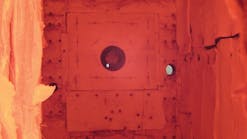Two years ago, Massachusetts Institute of Technology (MIT) researchers developed a structure comprised of a layer of graphite flakes on carbon foam that, when exposed to solar energy at an extremely intense light level, is capable of converting 85 percent of the energy to steam. The structure, which is porous and floats on water, can produce steam even at relatively low levels of solar intensity, producing more steam as light becomes brighter. According to a member of the research team, the sponge-like structure is inexpensive to produce compared with other methods of steam generation.
MIT since has improved this “solar vapor generator” to operate even on cool, overcast days, when it can heat water to its boiling point and convert 20 percent of incoming sunlight to steam. The solar vapor generator uses no mirrors or lenses to concentrate the light. Instead, it relies on ordinary bubble wrap around the sponge (an enhancement suggested by one researcher’s teenage daughter, who used bubble wrap for her science-fair-project greenhouse). This low-tech, inexpensive material allows the device to capture solar energy, convert it to heat, and direct it to the pores of the sponge, which draw water and release it as steam.
My interest in steam goes back to my first and last jobs in the HVAC industry: regional sales manager for a specialty steam-boiler manufacturer and president of what was one of the largest steam-trap manufacturers in the world. In fact, my first article for HPAC Engineering, in 1999, was on coil-type steam generators for heating-plant applications. In that article, I postulated that packaged forced-circulation, watertube boilers, which had been used primarily for process steam in very high-pressure industrial applications, could provide solutions for space heating in locations where floor space or headroom was limited.
Hydronics has all but eliminated steam heating in most areas of the United States. However, steam still is widely used in applications such as central supply sterilization in hospitals. Steam boilers generally are fuel- (natural gas or oil) fired, but require electricity for fans, valves, pumps, and controls. When MIT’s solar steam generator is scaled to commercial capabilities, field hospitals in remote areas will be able to use steam sterilization to properly sanitize their surgical instruments. The researchers also point out that solar absorbers based on this technology could be used to desalinate small bodies of water. Imagine being able to economically desalinate brackish water in undeveloped areas that have no electricity and limited potable water.










